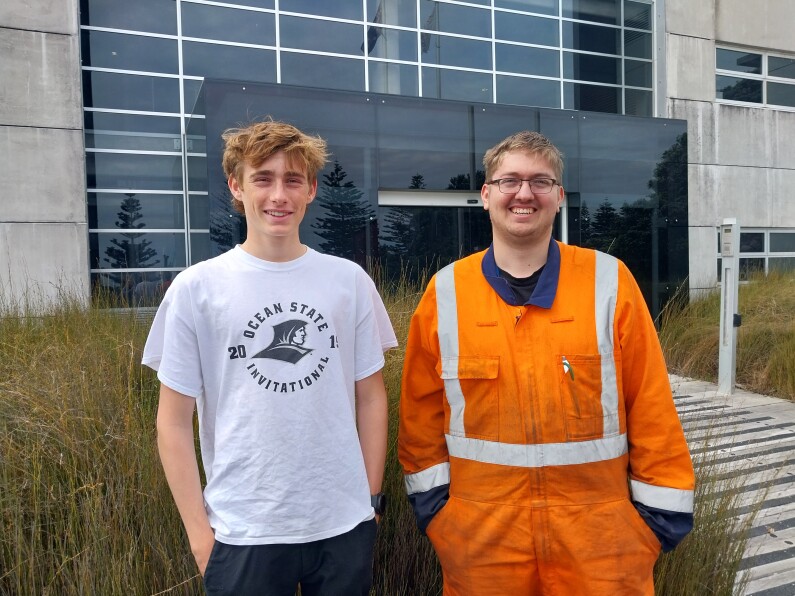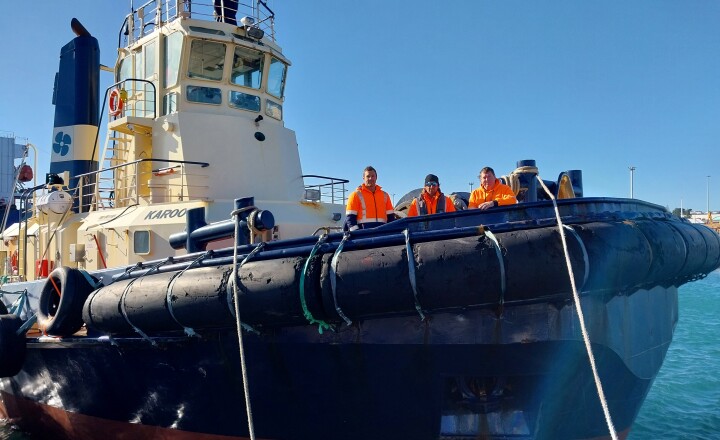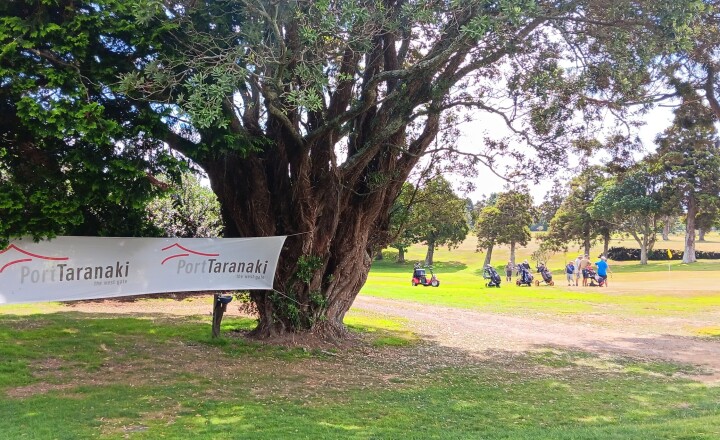
Two University of Canterbury engineering students have swapped the text books for the high-vis as they get some real-world work experience at Port Taranaki.
Former New Plymouth Boys’ High School students Robbie White, 19 (left), and Jack Stewart, 21, are spending a 10-week internship at Port Taranaki, with Robbie working in the engineering team, and Jack part of the maintenance team.
Robbie has completed his first year of a Bachelor of Engineering with Honours degree, and is looking to specialise in mechanical engineering, possibly minoring in biomedical engineering.
Jack has completed his third year of a Bachelor of Engineering with Honours degree in mechanical engineering, minoring in aerospace engineering.
Over the course of their degrees, they are each required to complete work placement ‘professional’ and ‘workshop’ hours.
“It’s been great, I’ve had a lot of different jobs here, so far,” says Robbie. “The main one has been carrying out an under-wharf assessment of Moturoa Wharf, and I’ve been designing and building dust deposition gauges for hoppers, which has been cool as it’s a real engineering job.
“I didn’t know a lot about the port beforehand, but knew it would be a good place to get lots of experience as it’s really busy and there’s a diverse range of work. It’s been great listening and learning from the engineers, and interesting to get some time out on-site and not just in the office all the time.”
Meanwhile, Jack’s been on the tools as he carries out his practical workshop hours.
“I’ve been working on the launch Mikotahi, helping with the work on the kids’ fishing jetty and getting that refloated, doing generator and vehicle monthly checks, and helping put tractors back together. Anywhere they need an extra set of hands, I’ve been helping,” he says.
“My father Mark works here (assistant project manager Mark Stewart), but I didn’t know in great detail what goes on at the port. It’s great learning about the port and also getting some practical experience, which is really important for making sure that, as an engineer, what you’re designing works in practice.”


